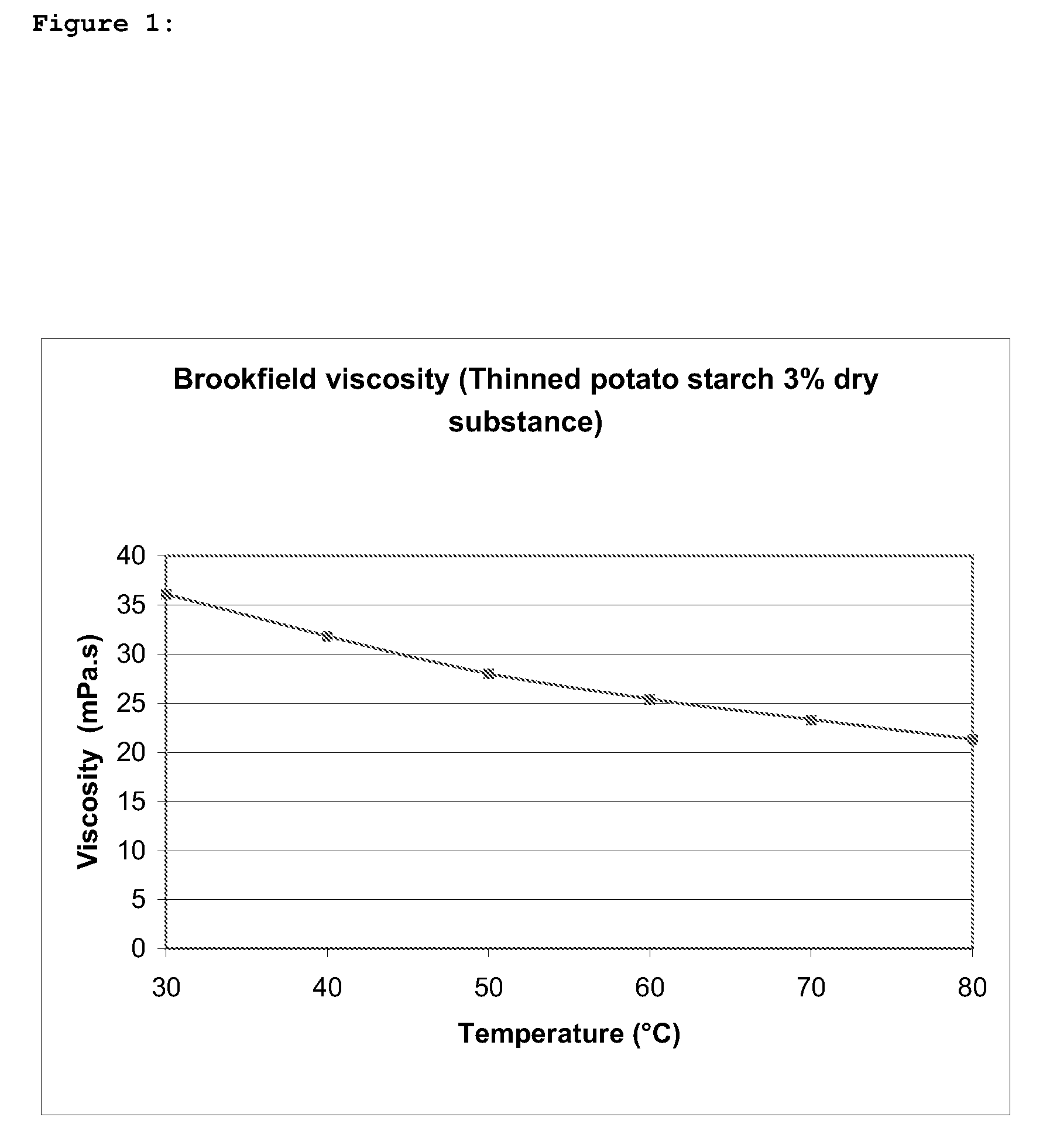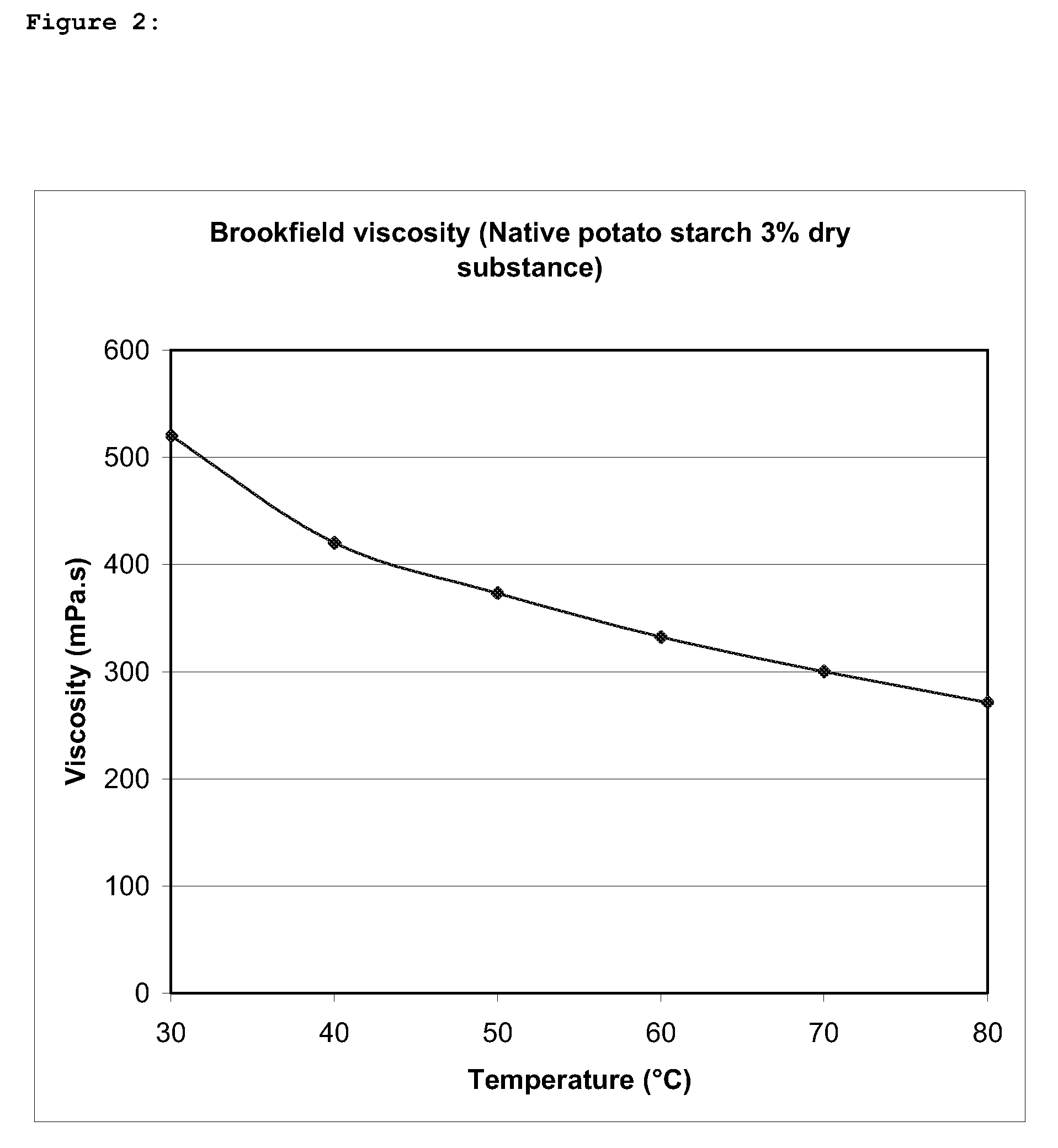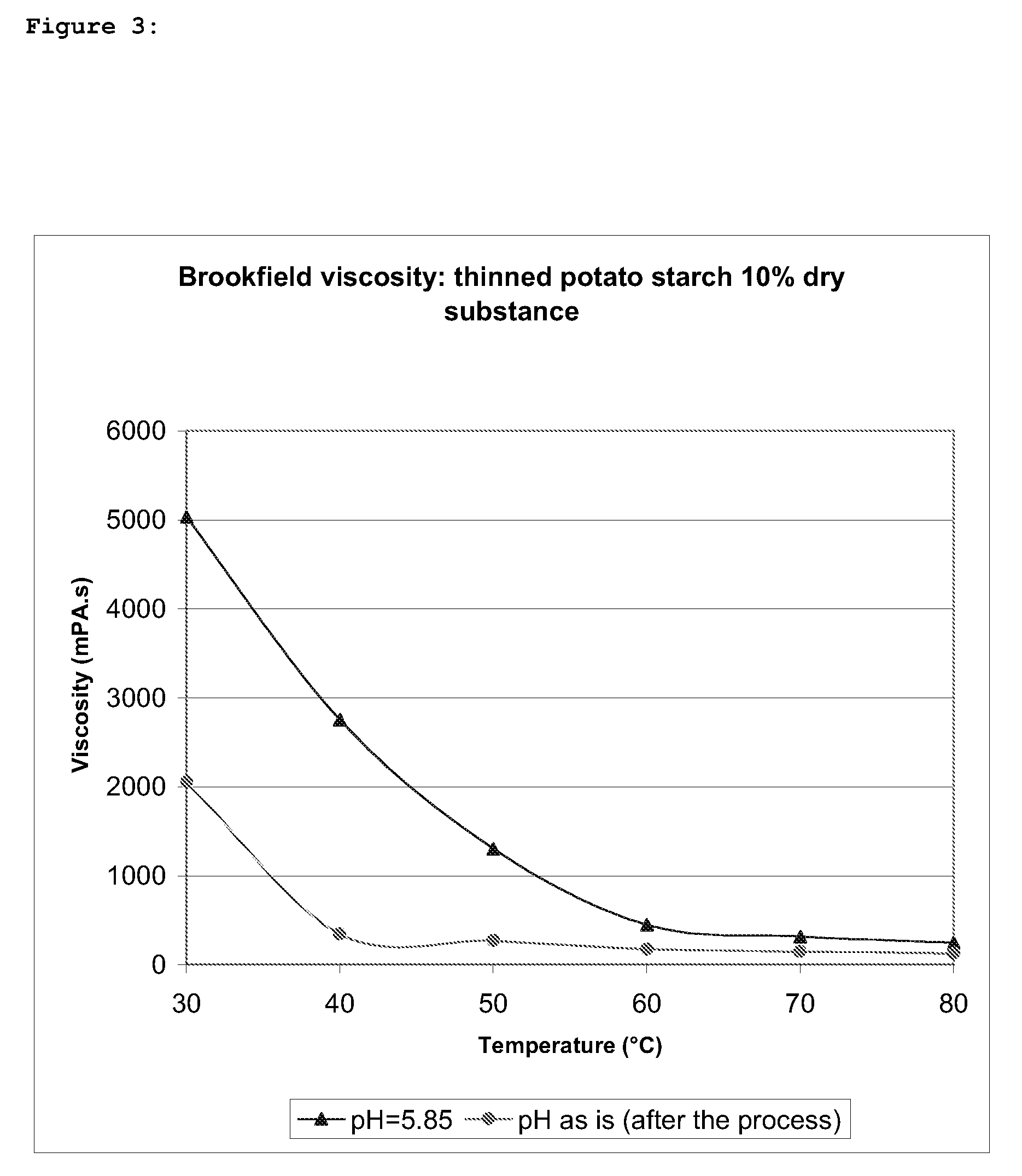Process for modification of biopolymers
a biopolymer and process technology, applied in the field of thinning, can solve the problems of increasing production costs, increasing production costs, and wasting water, and achieve the effect of improving the process
- Summary
- Abstract
- Description
- Claims
- Application Information
AI Technical Summary
Benefits of technology
Problems solved by technology
Method used
Image
Examples
example 1
Thinned / Oxidized Starch
[0056]Native potato starch (which has a gelatinisation temperature of about 65° C.), an alkalizing agent (NaOH) and a sodium hypochlorite solution were mixed for 30 seconds in an LOEDIGE mixer.
[0057]
Potato starch (16% moisture)61.0Kg / hNaOCl solution (155 g of Cl / l)3.16L / hNaOH (50% water solution)5.8Kg / h
[0058]The product coming out of the mixer (at a temperature of about 20-25° C.) was immediately dried in a flash drier for 15 seconds at 140° C.
example 2
Brookfield Viscosity
[0059]The viscosity of the sample was measured with the Brookfield viscometer DV-II, using a 3% (w / w) slurry. This slurry was cooked in a boiling water-bath during 30 minutes under stirring conditions (250 rpm). The mixture was then cooled with water to a temperature of less than 30° C. and the viscosity was measured at different temperatures under stirring (100 rpm) and with spindle n.2.
[0060]In FIG. 1, the curve of the thinned starch is shown. To observe the thinning effect, it is useful to compare said curve with the one of FIG. 2 which is the viscosity curve of a native starch measured under the same conditions. The analysis has been done on a slurry containing 3% (dry substance) of the thinned starch.
[0061]At 60° C., for example, the viscosity of the thinned starch is around 25 mPa·s while the one of the native starch is around 330 mPa·s.
[0062]FIG. 3 shows the viscosity profile under the same conditions but this time the slurry contains 10% thinned starch.
[0...
example 3
Thinned / Oxidized Starch
[0064]Potato starch, alkalizing agent, and sodium hypochlorite solution (169 g of Cl2 per liter) were mixed for 30 seconds in an LOEDIGE mixer.
[0065]
Potato starch (18.7% moisture)53.3Kg / hNaOCl (H2O solution)7.7l / hNaOH (50% water solution)1.18Kg / h
[0066]The product coming out of the mixer was immediately dried in a flash drier at 140° C. for 8-10 seconds.
PUM
| Property | Measurement | Unit |
|---|---|---|
| temperature | aaaaa | aaaaa |
| pH | aaaaa | aaaaa |
| temperature | aaaaa | aaaaa |
Abstract
Description
Claims
Application Information
 Login to View More
Login to View More - R&D
- Intellectual Property
- Life Sciences
- Materials
- Tech Scout
- Unparalleled Data Quality
- Higher Quality Content
- 60% Fewer Hallucinations
Browse by: Latest US Patents, China's latest patents, Technical Efficacy Thesaurus, Application Domain, Technology Topic, Popular Technical Reports.
© 2025 PatSnap. All rights reserved.Legal|Privacy policy|Modern Slavery Act Transparency Statement|Sitemap|About US| Contact US: help@patsnap.com



